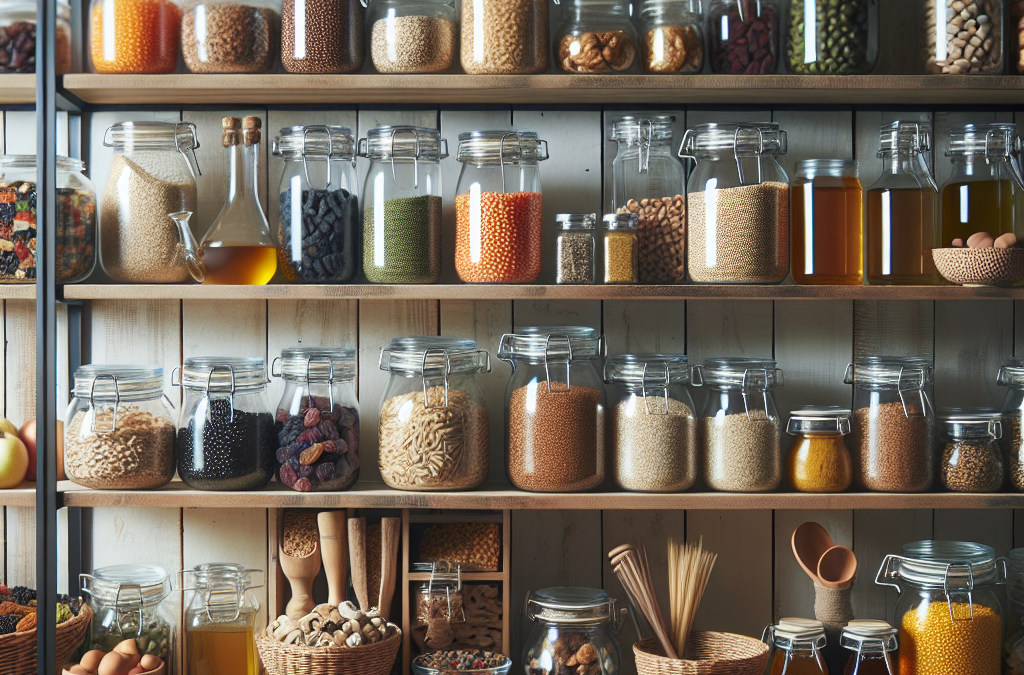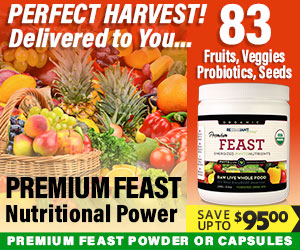Hey there! So, I’ve been diving deep into the world of organic food and let me tell you, building an organic pantry has been one of the most rewarding experiences in my kitchen journey. If you’re like me, you want to create a stockpile of healthy, organic goodies that not only make meal prep easier but also support a more sustainable lifestyle. Today, I’m excited to share some key essentials I recommend stocking up on! Let’s dive in!
Whole Grains
Understanding Whole Grains
Whole grains are a staple in my pantry, and for good reason! They’re packed with nutrients and offer countless health benefits, including fiber, protein, and essential vitamins. When I switched to whole grains, I noticed such a difference in my overall well-being and energy levels. They keep me fuller for longer and are super versatile in recipes.
From quinoa to brown rice to farro, there’s an array of options to choose from. Each grain offers a unique flavor and texture, which can enhance any meal, whether it’s a hearty soup or a fresh salad. Plus, they all store well, which means I can buy in bulk without worrying about spoilage.
When you’re selecting whole grains, make sure to check labels for organic certification. This ensures you’re getting the cleanest grains possible, free from harmful pesticides and additives. For me, this step makes all the difference!
Storage Tips
Storing whole grains properly is crucial for keeping them fresh. I like to invest in airtight containers to prevent moisture and pests from ruining my stock. Glass jars are not only functional but they also look great on my pantry shelves! Trust me, a little bit of organization makes a huge difference.
Another tip is to keep grains in a cool, dark place. I find that my pantry is the perfect spot, but if you live in a particularly warm climate, you might want to consider storing them in the fridge or freezer for ultimate freshness. Just remember to bring them back to room temperature before cooking!
And don’t forget to label your containers! When I first started organizing my pantry, I lost track of what I had. With meal prep and cooking, it’s such a time-saver to easily spot what grains I’ve got on hand!
Recipes to Try
If you’re looking for ways to incorporate whole grains into your meals, I’m all about that! Start with a simple quinoa salad. Toss in some chopped veggies, a splash of olive oil, and vinegar, and you’ve got a perfect lunch or side dish. Seriously, it’s that easy!
Another favorite of mine is a hearty brown rice stir-fry. It’s quick, filling, and you can throw in whatever veggies and proteins you have lying around. This dish has saved me on busy weeknights more times than I can count!
Lastly, don’t underestimate the power of overnight oats for breakfast! I prepare a jar each night with oats, almond milk, and my favorite toppings. It’s a fantastic way to kickstart my day with energy and flavor!
Canned and Dried Beans
The Benefits of Beans
Let’s talk beans—the unsung heroes of the pantry! Canned and dried beans are incredibly versatile and packed with protein, fiber, and so much goodness. Since I made beans a staple in my pantry, I’ve found so many ways to enjoy them in meals, from soups to salads to tacos.
They’re also budget-friendly, which is a massive plus. Dried beans are particularly economical, and while they require a bit more preparation, they’re super easy to cook in bulk and freeze for later. Plus, you control the seasoning when cooking your own!
When buying canned beans, my pro tip is to grab those that are low in sodium or unsalted. I love adding my own spices to customize the flavor while ensuring I’m keeping it healthy. It’s all about balance, right?
How to Cook Dried Beans
If you’ve never cooked dried beans before, fear not! It’s a little bit of a process, but totally worth it. Start by soaking them overnight in plenty of water. This helps to reduce cooking time and makes them easier to digest. When you’re ready to cook, simply drain, rinse, and toss them in a pot with fresh water.
Bring them to a boil, then simmer until they’re tender. This usually takes about 1-2 hours depending on the variety of beans. The great thing is, while they’re on the stove, you can catch up on your favorite show or read a book—multi-tasking at its finest!
Once cooked, I often split them into portions and freeze to avoid any waste. They’re perfect for throwing into any meal throughout the week!
Easy Bean Recipes
In my experience, bean chili has been a total game changer. It’s warm, hearty, and you can make a big batch to feed family or stash leftovers for the week. Just throw in some ground turkey or keep it vegetarian for a wholesome dish!
Another simple idea is to make a black bean salsa—perfect for tacos or as a spicy dip at parties. Just mash up some black beans, add fresh tomatoes, onion, cilantro, and spices, and you’re in business!
And who doesn’t love a good bean salad for lunch? Combine chickpeas or kidney beans with diced veggies and a tangy lemon dressing. It’s colorful, healthy, and keeps well in the fridge!
Healthy Oils and Vinegars
The Importance of Oils
Oils are essential in my cooking toolkit! They not only add flavor but also provide healthy fats that are vital for our bodies. For my pantry, I always have a good extra virgin olive oil, avocado oil, and coconut oil on hand. Each has its own distinct properties and flavor, making them perfect for different types of recipes.
Extra virgin olive oil is my go-to for salads and finishing dishes. Its fruity flavor elevates any meal, and it’s packed with antioxidants. On the other hand, avocado oil has a high smoke point, making it the perfect choice for frying or roasting.
Coconut oil is another favorite of mine, especially when baking or making Asian dishes. It’s like a little flavor bomb, and it’s healthy too! Just ensure you’re opting for organic versions of these oils for the best quality.
Keeping Your Oils Fresh
One key aspect of storing oils is to keep them in a cool, dark place. I’ve learned the hard way when oils go rancid—they can ruin a dish in a heartbeat! I personally like to use dark glass containers to help protect the quality of the oil.
Also, check for any expiration dates on the bottles when buying. Trust me, freshness is key for a satisfying flavor in your meals. If I ever have a bottle getting close to its date, I make it my mission to use it up quickly!
Pro tip: label oils with the date they were opened. This way, I can keep track and ensure I’m always using the best quality for my cooking.
How to Use Vinegars
Vinegars are another pantry staple that brings a delightful punch to so many dishes. I keep a variety of vinegars—balsamic, apple cider, red wine, and rice vinegar. They’re essential not just for salads, but for marinades and sauces.
Get Certified Organic Whole Food Nutrition – Nutrient Dense Supplement
Apple cider vinegar is an absolute favorite for dressings and adding to my morning glass of water for a health boost. Balsamic vinegar brings richness to marinades and can even be drizzled over fruits for a surprising dessert!
Experimenting with different vinegars can really elevate your cooking game. Try using them in place of salt for seasoning—an easy way to boost flavor without the sodium. The variety keeps cooking interesting, which I love!
Seasonal Fruits and Vegetables
Choosing Organic Produce
Keeping seasonal fruits and veggies in my pantry is such an important part of my organic lifestyle. I try to source local produce whenever possible. It’s fresher, flavorful, and I love supporting local farmers! When I can, I buy organic to avoid pesticides and chemicals.
One thing I’ve learned is that seasonal produce not only tastes better but often costs less. Each season brings its own bounty—think ripe tomatoes in the summer or squash in the fall. Adapting my meals to incorporate what’s fresh keeps things exciting and helps with meal planning.
Before heading out to shop, I like to check what’s in season and plan ahead. It’s such a fun challenge for me to come up with new recipes based around what’s abundant!
Storage Tips for Fresh Produce
To keep my fruits and veggies fresh for longer, I’ve picked up a few tricks along the way. For leafy greens, I store them in a damp paper towel inside a container or bag to maintain their crispness. It makes such a noticeable difference!
For root vegetables like potatoes and onions, I make sure they’re kept in a cool, dark place. I’ve found that stacking them in a crate keeps them properly ventilated and prevents spoilage.
Also, keep in mind that some fruits produce ethylene gas, which can ripen other fruits quickly. I try to store those separately to extend their freshness. Organization is key when it comes to produce!
Roots to Riches: Recipes
When it comes to utilizing fresh produce, think about trying seasonal stir-fries or veggie roasts. Toss whatever you have in the pan with a little oil, salt, and pepper, and you’ve got a delicious side or main dish!
I absolutely love making fresh fruit salads in the summer. Just chop up whatever is ripe—berries, melons, stone fruits—and add a squeeze of lemon or lime juice for an instant tropical treat!
Don’t forget smoothies! I throw in a banana, spinach, and whatever other frozen fruit I have for a nutritious breakfast or snack. A superb way to pack in those veggies while keeping it delicious!
Herbs and Spices
The Power of Flavor
Herbs and spices are where the magic really happens in cooking! They’re essential for bringing my dishes to life, and I keep a well-stocked spice cabinet at all times. Fresh herbs like basil, cilantro, and parsley not only add beautiful colors but also tons of flavors to dishes!
Spices like cumin, turmeric, and paprika are key for adding depth. I love experimenting with different blends and flavors to discover new favorites. A simple dish can turn into a culinary delight with the right spices!
Organic herbs and spices definitely make a difference. Since I made the switch, I’ve noticed that they pack a more robust flavor profile than conventional options. Always a win in my book!
Storage Solutions
To keep my herbs and spices fresh for as long as possible, I store them in airtight jars away from sunlight. I also keep track of expiration dates because fresh spices retain their flavor much longer than stale ones.
Another pro tip is to label all my jars with the purchase date. I have a crazy amount of spices, and this little trick keeps me organized and ensures I use the older ones first!
I like to invest in a good spice rack too. It’s not only functional but also looks pretty lovely in my kitchen! Plus, it makes finding what I need a lot easier in the heat of cooking.
Using Fresh Herbs in Cooking
I can’t recommend enough how much fresh herbs can elevate a dish. I often toss herbs into salads, pasta, and even on top of pizzas for a burst of freshness. It’s like a little dose of flavor in every bite!
You can also create amazing herb-infused oils or butters for drizzling over roasted veggies or meats. Just blend some fresh herbs with olive oil and a pinch of salt for an easy yet elegant addition to your meals.
Don’t forget to try drying your own herbs if you grow them! It’s surprisingly simple and gives you a long-lasting supply of fresh flavor when you need it during the off-season.
FAQs
1. What are some essential items to start an organic pantry?
To kickstart your organic pantry, focus on whole grains, canned and dried beans, healthy oils and vinegars, seasonal fruits and vegetables, and a good selection of herbs and spices. These items provide a great foundation for a variety of meals!
2. How do I store whole grains and dried beans?
Store whole grains and dried beans in airtight containers in a cool, dark place. This helps retain freshness and prevents spoilage. Glass jars work wonders for visibility and organization!
3. Can I use the same oils for cooking and dressing salads?
Absolutely! Extra virgin olive oil is great for both cooking and drizzling on salads. Just remember to choose oils based on their flavor and your cooking methods!
4. Are frozen fruits and vegetables healthy?
Yes, frozen fruits and vegetables can be very healthy! They are often frozen at peak ripeness, preserving their nutrients. Just be cautious of added sugars or salt in some frozen products.
5. What’s the best way to use fresh herbs?
Fresh herbs can be used in countless ways! Add them to salads, blend them into sauces, or use them to garnish finished dishes. They bring vibrant flavors and can transform simple meals into something special!




